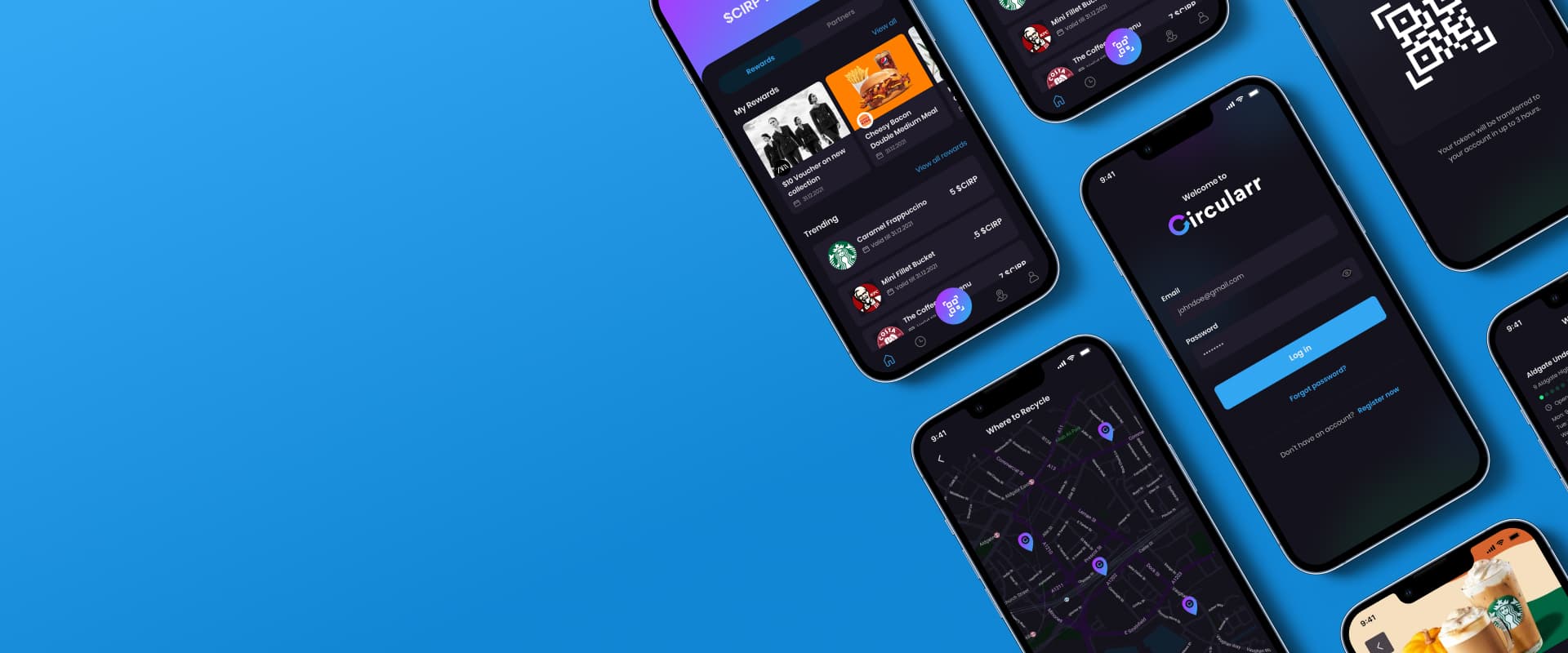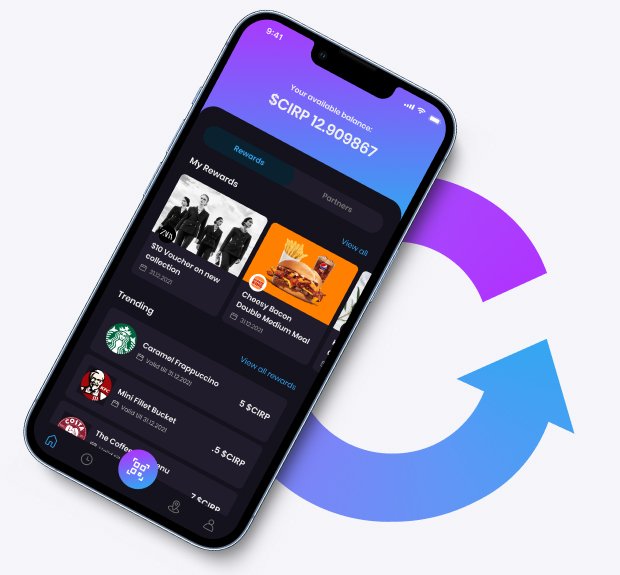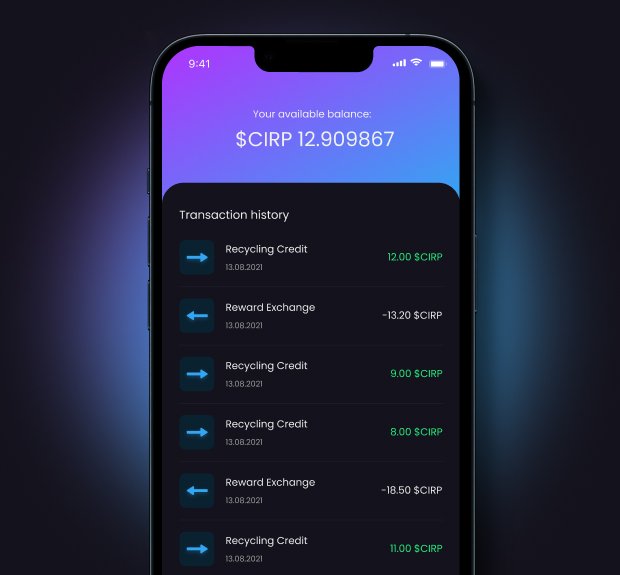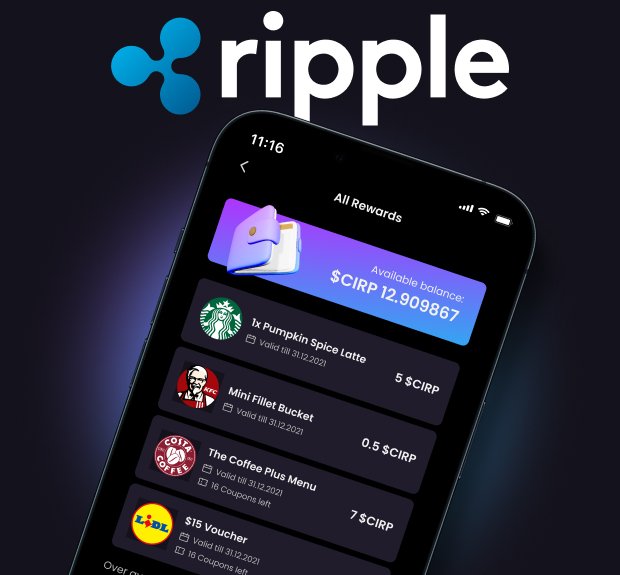About the client
Details
- Website:https://circularr.com/
- Location:London, United Kingdom
- Founded:2021

Details
Design a recycling ecosystem consisting of different tools and apps for all parties involved in the recycling process
Provide a robust framework that can be easily integrated into existing 3rd party software and infrastructure, thus allowing for a rapid development
Introduce a high-level business strategy
Execute the ecosystem’s connection and adjustment with reverse vending machines
Work out and implement a comprehensive tokenomics strategy and flow
Plastic waste and pollution have attracted mounting concerns in recent years. It’s been reported that around 380 million tons of plastic are produced yearly. Worryingly, this volume is forecast to double by 2040.
Keen to make a difference and alleviate the burden on the environment, our customer decided to develop a sophisticated recycling network that would reduce the level of plastic pollution and incentivize people to take part in optimizing plastic waste management while receiving rewards for their active participation.
The concept envisioned creating a high-tech recycling ecosystem that would bring together plastic waste producers and recyclers and allow the latter to dispose of plastic bottles via connected reverse vending machines.
380 million
tons of plastic are produced annually
100 million
marine animals are estimated to die from plastic waste each year
Only 1 in 5
plastic bottles are recycled
Up to 1000 years
is needed for a single plastic bottle to decompose
1500 plastic bottles
are thrown away every second daily
To bring this inspiring idea to life, the client reached out to our PixelPlex development team. We joined hands and worked together to produce a solution that would help tackle plastic waste issues and make this world a better place.
Our team delivered a decentralized, Ripple-powered plastic recycling network comprising an admin panel intended for operating with an extensive database, a mobile wallet for managing tokens, and a cross-platform application for tracking deposited plastic.
We have also successfully integrated the network with RVM software and implemented a high-level tokenomics model, enabling the establishment of a high-end ecosystem and ensuring effective collaboration among all stakeholders.

Our development team produced a web admin panel that consists of multiple tools and functionalities needed to efficiently operate with the entire ecosystem, manage its configurations and settings, and carry out oversight functions critical to the network.
The admin panel empowers the admins to accomplish the following:
To conveniently track multiple processes occurring at different stages of plastic waste management, the client required our engineers to design a special track & trace application.
The cross-platform mobile app allows users to easily trace and handle the following aspects of the ecosystem:
Employee management
The admin is responsible for adding data about new employees as well as setting up corresponding accounts in the admin panel, and tracking employee status and information such as email, phone number, etc.
Collection zones
Recyclers are distributed in accordance with the collection zone they are assigned to, and they collect plastic from RVMs located in those zones. Using the "Collection zones" section, the SuperAdmin has the right to create/edit the data from a collection zone, upload a map showing zone borders, and see all the ecosystem’s zone borders.
Block management
Blocks are crumbled recycling materials. A block order unites a number of assembled blocks that have been collected by the recycler on a single route. The recycling network admin can handle block orders and their navigation, and see and manage their status (delivered, canceled, or in progress).
Advertisement
The admin is able to choose which advertisements to display on a vending machine. They can add and customize advertisements and then link them to a particular RVM.
Pellets
Made from deposited and recycled plastic, pellets can later be used as trading objects in the form of NFTs. The admin can track pellet status at the warehouse, and mint and sell pellet NFTs to partners.
Our technical specialists created an easily navigable, cross-platform mobile wallet to enable users to receive and manage token rewards for depositing plastic bottles into vending machines. It allows users to view their balance, transaction history, relevant information about their rewards, purchased coupons, platform partners, and so on.
More importantly, the wallet contains an integrated Google Map functionality that marks RVM machines on the map using special indicators, thus helping a user quickly find an RVM near them. Besides, it provides a complete list of all vending machines available in the region with their corresponding addresses.
The cross-platform wallet possesses a QR-scan functionality. Once a user has found an RVM and deposited their plastic into it, they need to sign into their wallet and scan the QR code for that particular machine. Upon scanning the code, a user earns token rewards and has them transferred to their wallet. Equally, they can choose to send them directly to a charitable organization supported by the platform.

Alongside the customer, we performed thorough research and analysis of multiple blockchains and decided to opt for Ripple because it is one of the most environmentally-friendly protocols.
The Ripple blockchain underpins the recycle-to-earn ecosystem and user wallet and enables NFT minting.

A user finds a supported reverse vending machine on the map and deposits a plastic bottle into it
A user scans the QR code on the vending machine and is redirected to their pre-installed mobile wallet to gain tokens for the deposited plastic
A user can exchange received tokens for discounts and gift certificates. Equally, they can sell their token via liquidity pools and receive funds via an online transfer or donate the proceeds to a charity
A plastic waste producer buys tokens on the market and delegates them to a recycler
A recycler makes a payment in tokens and receives bottles from a vending machine
The journey of the deposited plastic is traced via the track & trace mobile app
An admin receives a report about the number of plastic bottles produced and recycled. They also receive an NFT that serves as proof that the plastic has been recycled
Given that the client wanted to incorporate tokens into the recycling system, we conducted numerous sessions and introduced the following tokenomics principles and criteria:
Each reverse vending machine is a wallet, initially pre-loaded with tokens
Users receive their rewards from RVMs into their mobile wallets
Users swap their tokens for discount coupons and gift cards within their wallets
Users can sell their tokens through liquidity pools and either receive funds via an online transfer or donate the proceeds to a charity from a list
Recyclers use wallets to transact with RVMs to retrieve bottles
Recyclers buy tokens from liquidity pools and use centralized wallets for multiple collection vehicles
Corporations buy tokens from liquidity pools using centralized wallets for multiple collection vehicles, and give them to recyclers
The ecosystem’s foundation controls the token supply